Roberto Tron
Real-Time Navigation for Autonomous Aerial Vehicles Using Video
Apr 01, 2025Abstract:Most applications in autonomous navigation using mounted cameras rely on the construction and processing of geometric 3D point clouds, which is an expensive process. However, there is another simpler way to make a space navigable quickly: to use semantic information (e.g., traffic signs) to guide the agent. However, detecting and acting on semantic information involves Computer Vision~(CV) algorithms such as object detection, which themselves are demanding for agents such as aerial drones with limited onboard resources. To solve this problem, we introduce a novel Markov Decision Process~(MDP) framework to reduce the workload of these CV approaches. We apply our proposed framework to both feature-based and neural-network-based object-detection tasks, using open-loop and closed-loop simulations as well as hardware-in-the-loop emulations. These holistic tests show significant benefits in energy consumption and speed with only a limited loss in accuracy compared to models based on static features and neural networks.
Accelerating Proximal Policy Optimization Learning Using Task Prediction for Solving Games with Delayed Rewards
Nov 26, 2024
Abstract:In this paper, we tackle the challenging problem of delayed rewards in reinforcement learning (RL). While Proximal Policy Optimization (PPO) has emerged as a leading Policy Gradient method, its performance can degrade under delayed rewards. We introduce two key enhancements to PPO: a hybrid policy architecture that combines an offline policy (trained on expert demonstrations) with an online PPO policy, and a reward shaping mechanism using Time Window Temporal Logic (TWTL). The hybrid architecture leverages offline data throughout training while maintaining PPO's theoretical guarantees. Building on the monotonic improvement framework of Trust Region Policy Optimization (TRPO), we prove that our approach ensures improvement over both the offline policy and previous iterations, with a bounded performance gap of $(2\varsigma\gamma\alpha^2)/(1-\gamma)^2$, where $\alpha$ is the mixing parameter, $\gamma$ is the discount factor, and $\varsigma$ bounds the expected advantage. Additionally, we prove that our TWTL-based reward shaping preserves the optimal policy of the original problem. TWTL enables formal translation of temporal objectives into immediate feedback signals that guide learning. We demonstrate the effectiveness of our approach through extensive experiments on an inverted pendulum and a lunar lander environments, showing improvements in both learning speed and final performance compared to standard PPO and offline-only approaches.
BoxMap: Efficient Structural Mapping and Navigation
Oct 08, 2024
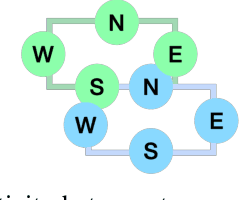
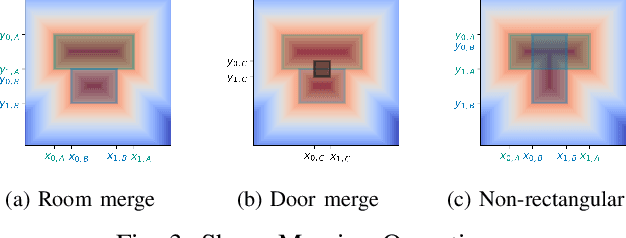
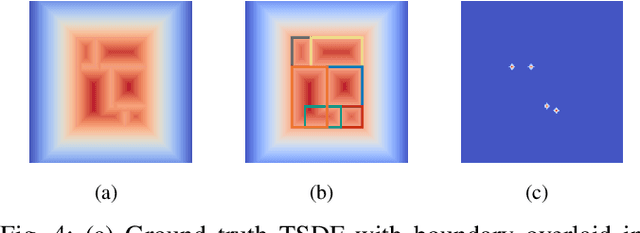
Abstract:While humans can successfully navigate using abstractions, ignoring details that are irrelevant to the task at hand, most existing robotic applications require the maintenance of a detailed environment representation which consumes a significant amount of sensing, computing, and storage. These issues are particularly important in a resource-constrained setting with limited power budget. Deep learning methods can learn from prior experience to abstract knowledge of unknown environments, and use it to execute tasks (e.g., frontier exploration, object search, or scene understanding) more efficiently. We propose BoxMap, a Detection-Transformer-based architecture that takes advantage of the structure of the sensed partial environment to update a topological graph of the environment as a set of semantic entities (e.g. rooms and doors) and their relations (e.g. connectivity). These predictions from low-level measurements can then be leveraged to achieve high-level goals with lower computational costs than methods based on detailed representations. As an example application, we consider a robot equipped with a 2-D laser scanner tasked with exploring a residential building. Our BoxMap representation scales quadratically with the number of rooms (with a small constant), resulting in significant savings over a full geometric map. Moreover, our high-level topological representation results in 30.9% shorter trajectories in the exploration task with respect to a standard method.
Inverse Kinematics with Vision-Based Constraints
Jun 15, 2024Abstract:This paper introduces the Visual Inverse Kinematics problem (VIK) to fill the gap between robot Inverse Kinematics (IK) and visual servo control. Different from the IK problem, the VIK problem seeks to find robot configurations subject to vision-based constraints, in addition to kinematic constraints. In this work, we develop a formulation of the VIK problem with a Field of View (FoV) constraint, enforcing the visibility of an object from a camera on the robot. Our proposed solution is based on the idea of adding a virtual kinematic chain connecting the physical robot and the object; the FoV constraint is then equivalent to a joint angle kinematic constraint. Along the way, we introduce multiple vision-based cost functions to fulfill different objectives. We solve this formulation of the VIK problem using a method that involves a semidefinite program (SDP) constraint followed by a rank minimization algorithm. The performance of this method for solving the VIK problem is validated through simulations.
Control of Microrobots Using Model Predictive Control and Gaussian Processes for Disturbance Estimation
Jun 04, 2024



Abstract:This paper presents a control framework for magnetically actuated micron-scale robots ($\mu$bots) designed to mitigate disturbances and improve trajectory tracking. To address the challenges posed by unmodeled dynamics and environmental variability, we combine data-driven modeling with model-based control to accurately track desired trajectories using a relatively small amount of data. The system is represented with a simple linear model, and Gaussian Processes (GP) are employed to capture and estimate disturbances. This disturbance-enhanced model is then integrated into a Model Predictive Controller (MPC). Our approach demonstrates promising performance in both simulation and experimental setups, showcasing its potential for precise and reliable microrobot control in complex environments.
TLINet: Differentiable Neural Network Temporal Logic Inference
May 14, 2024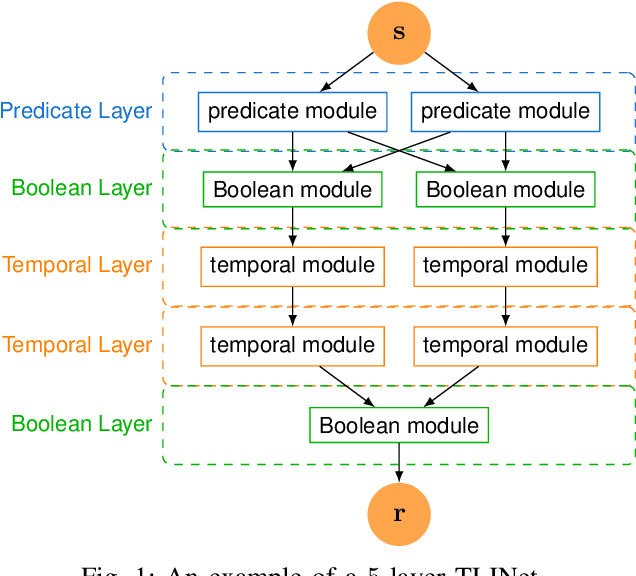
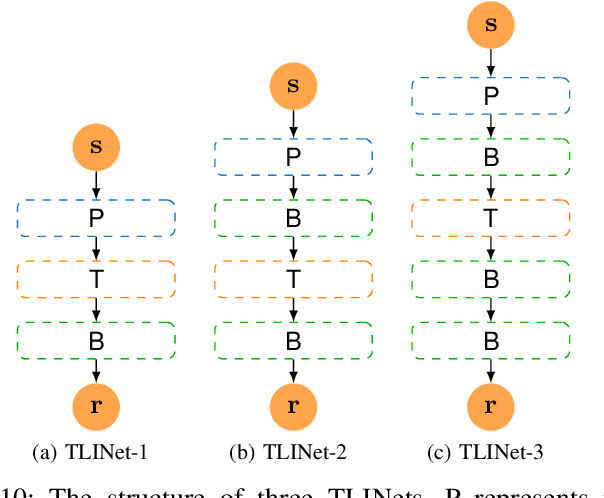
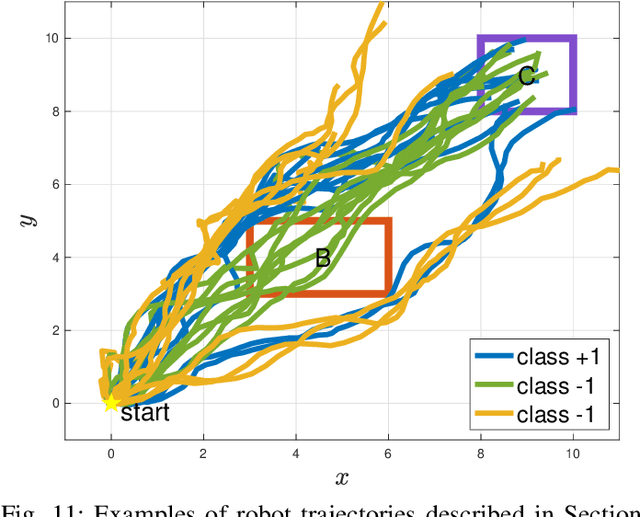
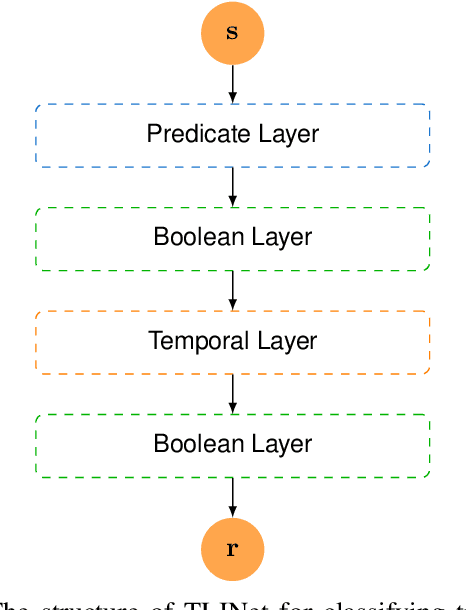
Abstract:There has been a growing interest in extracting formal descriptions of the system behaviors from data. Signal Temporal Logic (STL) is an expressive formal language used to describe spatial-temporal properties with interpretability. This paper introduces TLINet, a neural-symbolic framework for learning STL formulas. The computation in TLINet is differentiable, enabling the usage of off-the-shelf gradient-based tools during the learning process. In contrast to existing approaches, we introduce approximation methods for max operator designed specifically for temporal logic-based gradient techniques, ensuring the correctness of STL satisfaction evaluation. Our framework not only learns the structure but also the parameters of STL formulas, allowing flexible combinations of operators and various logical structures. We validate TLINet against state-of-the-art baselines, demonstrating that our approach outperforms these baselines in terms of interpretability, compactness, rich expressibility, and computational efficiency.
Safe and Stable Teleoperation of Quadrotor UAVs under Haptic Shared Autonomy
Mar 22, 2024Abstract:We present a novel approach that aims to address both safety and stability of a haptic teleoperation system within a framework of Haptic Shared Autonomy (HSA). We use Control Barrier Functions (CBFs) to generate the control input that follows the user's input as closely as possible while guaranteeing safety. In the context of stability of the human-in-the-loop system, we limit the force feedback perceived by the user via a small $L_2$-gain, which is achieved by limiting the control and the force feedback via a differential constraint. Specifically, with the property of HSA, we propose two pathways to design the control and the force feedback: Sequential Control Force (SCF) and Joint Control Force (JCF). Both designs can achieve safety and stability but with different responses to the user's commands. We conducted experimental simulations to evaluate and investigate the properties of the designed methods. We also tested the proposed method on a physical quadrotor UAV and a haptic interface.
Enhancing Security in Multi-Robot Systems through Co-Observation Planning, Reachability Analysis, and Network Flow
Mar 20, 2024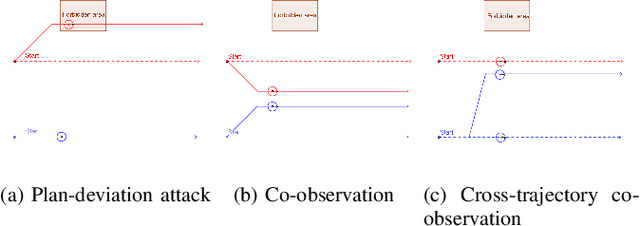
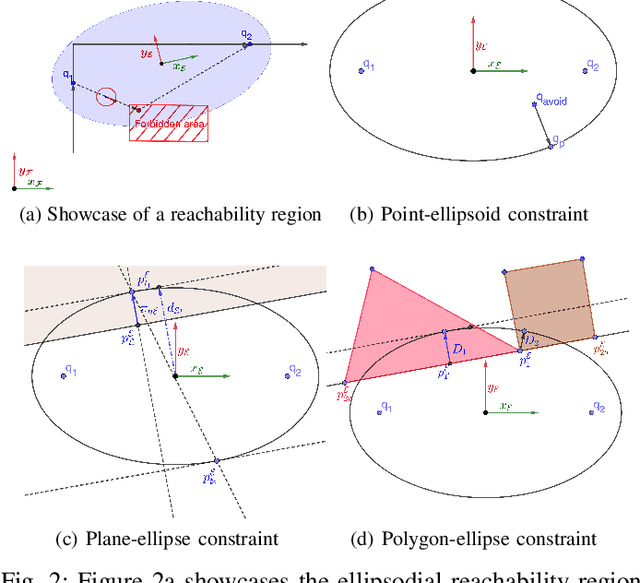
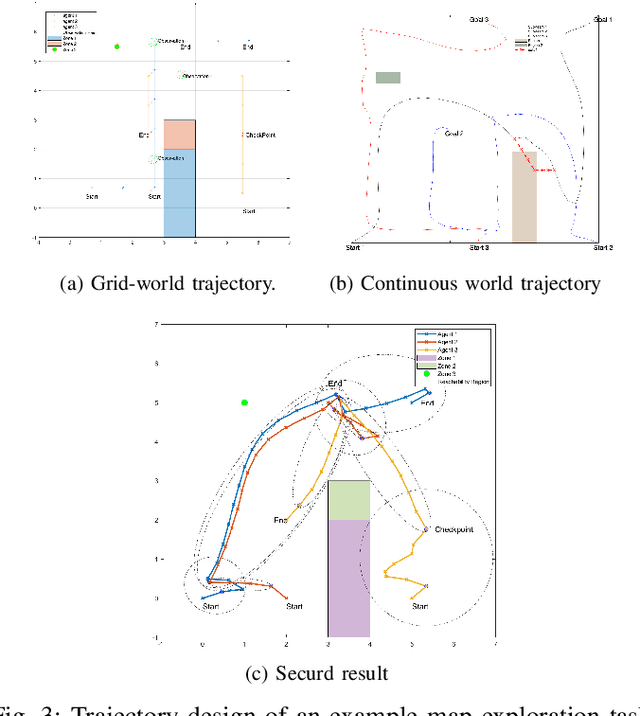

Abstract:This paper addresses security challenges in multi-robot systems (MRS) where adversaries may compromise robot control, risking unauthorized access to forbidden areas. We propose a novel multi-robot optimal planning algorithm that integrates mutual observations and introduces reachability constraints for enhanced security. This ensures that, even with adversarial movements, compromised robots cannot breach forbidden regions without missing scheduled co-observations. The reachability constraint uses ellipsoidal over-approximation for efficient intersection checking and gradient computation. To enhance system resilience and tackle feasibility challenges, we also introduce sub-teams. These cohesive units replace individual robot assignments along each route, enabling redundant robots to deviate for co-observations across different trajectories, securing multiple sub-teams without requiring modifications. We formulate the cross-trajectory co-observation plan by solving a network flow coverage problem on the checkpoint graph generated from the original unsecured MRS trajectories, providing the same security guarantees against plan-deviation attacks. We demonstrate the effectiveness and robustness of our proposed algorithm, which significantly strengthens the security of multi-robot systems in the face of adversarial threats.
IKSPARK: An Inverse Kinematics Solver using Semidefinite Relaxation and Rank Minimization
Mar 18, 2024



Abstract:Inverse kinematics (IK) is a fundamental problem frequently occurred in robot control and motion planning. However, the problem is nonconvex because the kinematic map between the configuration and task spaces is generally nonlinear, which makes it challenging for fast and accurate solutions. The problem can be more complicated with the existence of different physical constraints imposed by the robot structure. In this paper, we develop an inverse kinematics solver named IKSPARK (Inverse Kinematics using Semidefinite Programming And RanK minimization) that can find solutions for robots with various structures, including open/closed kinematic chains, spherical, revolute, and/or prismatic joints. The solver works in the space of rotation matrices of the link reference frames and involves solving only convex semidefinite problems (SDPs). Specifically, the IK problem is formulated as an SDP with an additional rank-1 constraint on symmetric matrices with constant traces. The solver first solves this SDP disregarding the rank constraint to get a start point and then finds the rank-1 solution iteratively via a rank minimization algorithm with proven local convergence. Compared to other work that performs SDP relaxation for IK problems, our formulation is simpler, and uses variables with smaller sizes. We validate our approach via simulations on different robots, comparing against a standard IK method.
Multi-class Temporal Logic Neural Networks
Feb 17, 2024Abstract:Time-series data can represent the behaviors of autonomous systems, such as drones and self-driving cars. The problem of binary and multi-class classification has received a lot of attention in this field. Neural networks represent a popular approach to classifying data; However, they lack interpretability, which poses a significant challenge in extracting meaningful information from them. Signal Temporal Logic (STL) is a formalism to describe the properties of timed behaviors. We propose a method that combines all of the above: neural networks that represent STL specifications for multi-class classification of time-series data. We offer two key contributions: 1) We introduce a notion of margin for multi-class classification, and 2) we introduce the use of STL-based attributes for enhancing the interpretability of the results. We evaluate our method on two datasets and compare with state-of-the-art baselines.
 Add to Chrome
Add to Chrome Add to Firefox
Add to Firefox Add to Edge
Add to Edge